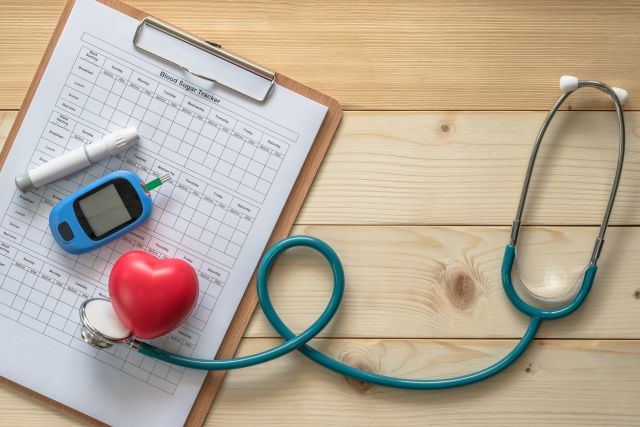Updated on October 28, 2024.
Compared to people without diabetes, those with diabetes are nearly two times as likely to die from heart disease or stroke. But there is some good news.
Although type 2 diabetes is considered a major risk factor for heart disease, it is also considered a controllable risk factor. This means you can reduce your risk of heart disease, heart attack, and stroke by taking steps to appropriately manage diabetes and keep the condition under control.
How type 2 diabetes contributes to heart attack and stroke
The high blood sugar levels associated with type 2 diabetes can cause damage to your blood vessels. They can also contribute to high blood pressure and unhealthy levels of cholesterol (a fat-like substance found in the blood).
Type 2 diabetes increases the risk of blood clots in the heart and brain, as well, which trigger the majority of heart attacks and strokes. The cause of blood clotting in people with type 2 diabetes is atherosclerosis, also called "hardening of the arteries" caused by a buildup of a deposit called plaque inside the arteries.
Plaque is a waxy substance in the blood made up of cholesterol, fat, and cellular waste products. When this substance accumulates in the arteries that supply the heart with blood, it is called coronary artery disease (CAD, the most common type of heart disease in the U.S.) When the buildup occurs in the arteries of the limbs, it is called peripheral artery disease. If the plaque buildup ruptures, a blood clot can form, blocking blood flow.
A heart attack, also called a myocardial infarction, occurs when one or more of the arteries that supply the heart with oxygen-rich blood becomes blocked or severely narrowed. Deprived of this oxygen-rich blood, the heart muscle begins to die.
Strokes are sometimes called “brain attacks.” They occur when there is an interruption in the supply of oxygen and blood to the brain. When a stroke occurs, brain tissue begins to die within minutes, which is why timely treatment is essential for preventing serious and permanent damage.
There are several varieties of stroke. The most common type is ischemic stroke, which occurs when blood and oxygen to the brain is cut off and is usually caused by a clot that blocks a blood vessel in the brain. Hemorrhagic strokes occur when a blood vessel in the brain ruptures and bleeds into the brain. There is a third type of stroke known as a transient ischemic attack (TIA), or mini-stroke. A TIA occurs when there is a temporary blockage of a blood vessel that lasts only a few minutes. TIAs are sometimes called “warning strokes” because they may be followed by a stroke with permanent damage.
What you can do to reduce your risk
Keeping type 2 diabetes under control will help you reduce your risk of heart disease, heart attack, stroke, and other potentially fatal heart-related events. A lifestyle built around a healthy diet, regular physical activity, and avoiding unhealthy habits is essential:
- Eat a balanced diet that includes plenty of vegetables, fruits, whole grains, and lean protein. Eat fewer processed foods (such as chips, sweets, and fast food) and avoid salt, saturated fat (which is solid at room temperature, like butter), and trans fat (often found in junk food). Consider seeing a diabetes educator if you need help developing an eating plan that works for you. If you have questions about diabetes education and whether your insurance covers, talk with your healthcare provider (HCP)
- If you’re overweight or obese, work toward achieving a healthy weight. Even losing 5 to 7 percent of your body weight can lower your blood sugar levels and triglycerides.
- It’s important to limit or avoid drinking alcohol. Water is a healthy alternative to juices and sugary drinks.
- Move more, as you are able. Most adults should get at least 30 minutes a day of moderate-intensity exercise, such as brisk walking, five days a week. Check with your healthcare provider (HCP) about the right level of exercise for you.
- Do not smoke. If you do smoke, quit. Smoking significantly increases your risk of type 2 diabetes complications.
Always follow the blood sugar monitoring schedule and treatment plan prescribed by your HCP. Have your ABC numbers (A1C [an estimate of your blood sugar levels over the past 3 months], blood pressure, cholesterol) checked regularly. Some people with type 2 diabetes may also need to take medications to protect their heart and brain, and see a cardiologist to more closely monitor their heart health.







